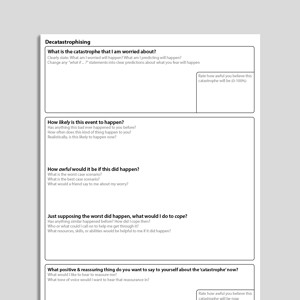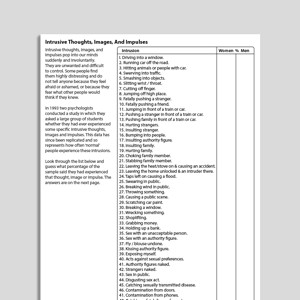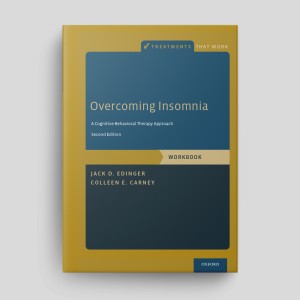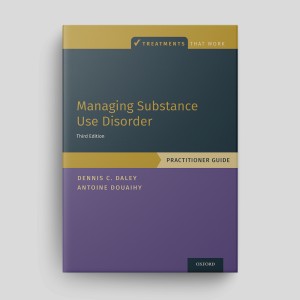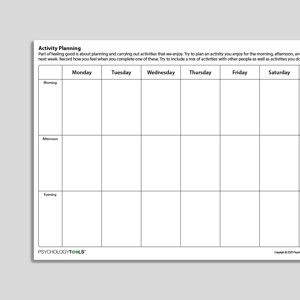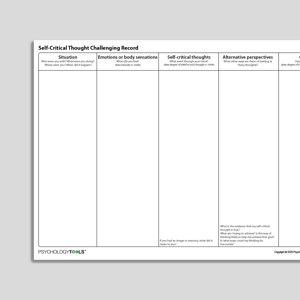Cognitive Behavioral Therapy (CBT)
Cognitive behavior therapy (CBT) is a popular form of psychological therapy that works with our thoughts, feelings, and behaviors. CBT is an integration of principles from behavior therapy with theory and methods from the cognitive therapies developed by Aaron Beck and Albert Ellis. The CBT that is practiced today has evolved with new developments in basic and applied research; it is grounded in empirical research and clinical practice. CBT is a broad church: the family of ‘cognitive and behavioral therapies’ encompasses many approaches including cognitive therapy, acceptance and commitment therapy (ACT), dialectical behavior therapy (DBT), and compassion-focused therapy (CFT).
Beck’s cognitive model identifies different levels of human cognitions: automatic thoughts are the most superficial level of cognition and describe the thoughts, words, ideas, and images that seem to pop into our minds; rigid and over-generalized core beliefs about ourselves, the world, and other people; and intermediate attitudes, rules, and assumptions that are influenced by our core beliefs. The cognitive model proposes that how we feel emotionally, and how we act, are determined by how we interpret and think about a situation. It argues that psychological problems and disorders are the result of dysfunctional thinking, and are maintained by self-defeating behavior influenced by inaccurate beliefs. Cognitive behavior therapists understand that by changing the way we think and act in the here-and-now we can change the way we feel, and CBT often begins with a focus on what is maintaining a problem in the present. For lasting change, CBT therapists often work with the deeper levels of their client’s beliefs and assumptions. Read more

100 of 319 resources
Cognitive Distortions – Unhelpful Thinking Styles (Extended)
Cognitive distortions (or ‘unhelpful thinking styles’) are ways that our thoughts become biased. Different cognitive biases are associated with di ...
https://www.psychologytools.com/resource/cognitive-distortions-unhelpful-thinking-styles-extended/
Riding The Wave: Workbook
Riding The Wave comes in two volumes. This page is for the Workbook. Click here to access the Therapist Guide.Mastery of Anxiety and Panic f ...
https://www.psychologytools.com/resource/riding-the-wave-workbook/
Cognitive Distortions – Unhelpful Thinking Styles (Common)
Cognitive distortions (or ‘unhelpful thinking styles’) are ways that our thoughts become biased. Different cognitive biases are associated with di ...
https://www.psychologytools.com/resource/cognitive-distortions-unhelpful-thinking-styles-common/
Mastering Your Adult ADHD: A Cognitive-Behavioral Treatment Program (Second Edition): Workbook
Mastering Your Adult ADHD: A Cognitive-Behavioral Treatment Program comes in two volumes. This page is for the Client Workbook. Click here to acc ...
https://www.psychologytools.com/resource/mastering-your-adult-adhd-a-cognitive-behavioral-treatment-program-workbook/
Mastery of Anxiety And Panic For Adolescents: Riding The Wave: Therapist Guide
Mastery Of Anxiety And Panic For Adolescents: Riding The Wave comes in two volumes. This page is for the Therapist Guide. Click here to access the Cli ...
https://www.psychologytools.com/resource/mastery-of-anxiety-and-panic-for-adolescents-riding-the-wave-therapist-guide/
Audio Collection: Psychology Tools For Mindfulness
The Psychology Tools For Mindfulness Audio Collection is the perfect way to introduce your clients to the practice of mindfulness. Developed by a clin ...
https://www.psychologytools.com/resource/psychology-tools-for-mindfulness-audio-collection/
Window Of Tolerance
The window of tolerance concept was coined by Dan Siegel in his 1999 book The Developing Mind. Siegel proposes that everyone has a range of intensitie ...
https://www.psychologytools.com/resource/window-of-tolerance/
Assertive Communication
Communicating and acting assertively is an interpersonal skill that helps people to maintain healthy relationships, resolve interpersonal conflict, an ...
https://www.psychologytools.com/resource/assertive-communication/
Therapy Blueprint (Universal)
A therapy blueprint is CBT tool which summarizes the work a therapist and patient have completed together. It represents the past (the problems, what ...
https://www.psychologytools.com/resource/therapy-blueprint-universal/
Embracing Uncertainty
Intolerance of uncertainty (IU) was first described in individuals suffering from Generalized Anxiety Disorder (GAD). Many behaviors associated with G ...
https://www.psychologytools.com/resource/embracing-uncertainty/
Theory A / Theory B
People naturally seek to understand their world and develop explanations based on their experiences. When these beliefs are inaccurate or only partial ...
https://www.psychologytools.com/resource/theorya-theoryb/
Intolerance Of Uncertainty
Uncertainty is a normal part of life – we can never be 100% sure about what will happen next. Many people feel good about uncertainty and live lives ...
https://www.psychologytools.com/resource/intolerance-of-uncertainty/
Managing Social Anxiety (Third Edition): Workbook
Managing Social Anxiety – A Cognitive-Behavioral Therapy Approach comes in two volumes. This page is for the Workbook. Click on the following link t ...
https://www.psychologytools.com/resource/managing-social-anxiety-workbook/
Thought Record (Evidence For And Against)
CBT Thought Records exist in multiple variants, depending on the needs and abilities of the client. This Thought Record (Evidence For And Against) is ...
https://www.psychologytools.com/resource/thought-record-evidence-for-and-against/
Before I Blame Myself And Feel Guilty
Guilt is a common post-traumatic reaction and is often the result of cognitive bias. This CBT worksheet explores common cognitive biases that have bee ...
https://www.psychologytools.com/resource/before-i-blame-myself-and-feel-guilty/
Mastering Your Adult ADHD: A Cognitive-Behavioral Treatment Program (Second Edition): Therapist Guide
Mastering Your Adult ADHD: A Cognitive Behavioral Treatment Program comes in two volumes. This page is for the Therapist Guide. Click here to access t ...
https://www.psychologytools.com/resource/mastering-your-adult-adhd-a-cognitive-behavioral-treatment-program-therapist-guidance/
Unhelpful Thinking Styles (Archived)
NOTE: Two improved versions of this resource are available here: Cognitive Distortions – Unhelpful Thinking Styles (Common) and Cognitive Disto ...
https://www.psychologytools.com/resource/unhelpful-thinking-styles-archived/
Values
Meaningful activity is value-driven. This ACT-informed worksheet explores the key domains of values and encourages clients to reflect upon what is imp ...
https://www.psychologytools.com/resource/values/
Assertive Responses
Being able to communicate assertively is an essential skill for developing and maintaining healthy relationships and positive self-esteem. Individuals ...
https://www.psychologytools.com/resource/assertive-responses/
Managing Your Substance Use Disorder (Third Edition): Workbook
Managing Substance Use Disorder comes in two volumes. This page is for the Client Workbook. Click on the following link to access the Practitioner Gui ...
https://www.psychologytools.com/resource/managing-your-substance-use-disorder-workbook/
Using Behavioral Activation To Overcome Depression
Using Behavioral Activation To Overcome Depression is a guide written for clients who are currently depressed. It provides clear information about dep ...
https://www.psychologytools.com/resource/using-behavioral-activation-to-overcome-depression/
Post-Traumatic Stress Disorder (PTSD) Formulation
The cognitive approach to post-traumatic stress disorder (PTSD) suggests that a heightened perception of threat in the here-and-now is maintained by i ...
https://www.psychologytools.com/resource/ptsd-formulation/
Activity Menu
Helping clients to choose which activities to target during behavioral activation (BA) can be accomplished in a variety of ways: activity monitoring c ...
https://www.psychologytools.com/resource/activity-menu/
Worry Flowchart
Worry is a cognitive process that involves thinking about problems that might happen in a way that causes anxiety. Not all worry is problematic – we ...
https://www.psychologytools.com/resource/worry-flowchart/
Social Anxiety Formulation
People suffering from social anxiety disorder (previously known as social phobia) experience persistent fear or anxiety concerning social or performan ...
https://www.psychologytools.com/resource/social-anxiety-formulation/
Low Self-Esteem Formulation
The cognitive approach to low self-esteem proposes that negative beliefs about the self are maintained by biased information processing, including per ...
https://www.psychologytools.com/resource/low-self-esteem-formulation/
Managing Bipolar Disorder: Workbook
Managing Bipolar Disorder comes in two volumes. This page is for the Client Workbook. Click here to access the Therapist Guide.Bipolar disor ...
https://www.psychologytools.com/resource/managing-bipolar-disorder-workbook/
Managing Social Anxiety (Third Edition): Therapist Guide
Managing Social Anxiety – A Cognitive-Behavioral Therapy Approach comes in two volumes. This page is for the Therapist Guide. Click on the following ...
https://www.psychologytools.com/resource/managing-social-anxiety-therapist-guide/
Managing Bipolar Disorder: Therapist Guide
Managing Bipolar Disorder comes in two volumes. This page is for the Therapist Guide. Click here to access the Client Workbook.Bipolar disorder is a c ...
https://www.psychologytools.com/resource/managing-bipolar-disorder-therapist-guide/
Supporting Caregivers Of Children With ADHD: An Integrated Parenting Program: Therapist Guide
Supporting Caregivers Of Children With ADHD: An Integrated Parenting Program comes in a single volume.Supporting Caregivers of Children with ADHD: An ...
https://www.psychologytools.com/resource/supporting-caregivers-of-children-with-adhd-an-integrated-parenting-program-therapist-guide/
Thought Distortion Monitoring Record
Thinking is often biased in particular ways and individuals often have their own characteristic patterns of bias. The Thought Distortion Monitoring Re ...
https://www.psychologytools.com/resource/thought-distortion-monitoring-record/
Prompts For Challenging Your Negative Thinking
Cognitive restructuring is an evidence-based intervention that involves identifying, evaluating, and modifying maladaptive cognitions, including negat ...
https://www.psychologytools.com/resource/prompts-for-challenging-your-negative-thinking/
Compassionate Thought Challenging Record
Thought challenging records are commonly used in CBT to help people to evaluate their negative automatic thoughts for accuracy and bias. This Compassi ...
https://www.psychologytools.com/resource/compassionate-thought-challenging-record/
Behavioral Experiment
Behavioral experiments are planned experiential activities to test the validity of a belief. They are one of the most powerful techniques available to ...
https://www.psychologytools.com/resource/behavioral-experiment/
What Keeps Obsessive Compulsive Disorder (OCD) Going?
The "What Keeps It Going?" series is a set of one-page diagrams explaining how common mental health conditions are maintained. Friendly and concise, t ...
https://www.psychologytools.com/resource/what-keeps-obsessive-compulsive-disorder-ocd-going/
Anxiety - Self-Monitoring Record
Developing self-monitoring skills teaches clients to systematically observe and record specific targets such as their own thoughts, body feelings, emo ...
https://www.psychologytools.com/resource/anxiety-self-monitoring-record/
Behavioral Activation Activity Diary
Behavioral activation (BA) is an effective treatment for depression. Different behavioral activation protocols include a variety of treatment componen ...
https://www.psychologytools.com/resource/behavioral-activation-activity-diary/
What Is Cognitive Behavioral Therapy (CBT)?
Cognitive behavioral therapy (CBT) is fundamentally concerned with the meanings which people make of their experiences. The insight of the CBT model i ...
https://www.psychologytools.com/resource/what-is-cbt-worksheet-handout/
OCD Diary
Self-monitoring of thoughts, feelings and symptoms is an essential skill for clients engaged in cognitive behavioral therapy (CBT). Clients will find ...
https://www.psychologytools.com/resource/ocd-diary/
Self-Blame
The Self-Blame information handout forms part of the cognitive distortions series, designed to help clients and therapists to work more effectively wi ...
https://www.psychologytools.com/resource/self-blame/
Worry Postponement
Worry postponement ("worry time") is often prescribed as an exploratory or standalone intervention relatively early in the treatment of GAD, but ...
https://www.psychologytools.com/resource/worry-postponement/
Examining Your Negative Thoughts
Cognitive restructuring is an evidence-based intervention that involves identifying, evaluating, and modifying maladaptive cognitions, including negat ...
https://www.psychologytools.com/resource/examining-your-negative-thoughts/
Survey – Testing Your Beliefs
Behavioral experiments are a key component of cognitive behavioral therapy (CBT) and regarded as one of the most effective methods for bringing about ...
https://www.psychologytools.com/resource/survey-testing-your-beliefs/
Exposure And Response Prevention
Exposure And Response Prevention (ERP, EX/RP) is an effective treatment for obsessive compulsive disorder (OCD). This CBT worksheet guides therapists ...
https://www.psychologytools.com/resource/exposure-and-response-prevention/
Cross Sectional Formulation
Case conceptualizations (formulations) help therapists and clients come to a shared understanding of a problem. This Cross Sectional Formulation explo ...
https://www.psychologytools.com/resource/cross-sectional-formulation/
Behavioral Experiment (Portrait Format)
Behavioral experiments allow individuals to test the validity of their beliefs and assumptions. They are a core experiential technique for therapeutic ...
https://www.psychologytools.com/resource/behavioral-experiment-portrait-format/
Treating Your OCD With Exposure And Response (Ritual) Prevention (Second Edition): Workbook
Exposure and Response (Ritual) Prevention for Obessssive-Compulsive Disorder comes in two volumes. This page is for the Client Workbook. Click on the ...
https://www.psychologytools.com/resource/treating-your-ocd-with-exposure-and-response-ritual-prevention-workbook/
PTSD And Memory
Alterations in the way the brain processes 'normal' vs. 'traumatic' material are thought to be responsible for the intrusive nature of memories in con ...
https://www.psychologytools.com/resource/ptsd-and-memory/
Understanding Obsessive Compulsive Disorder (OCD)
Our ‘Understanding…’ series is a collection of psychoeducation guides for common mental health conditions. Friendly and explanatory, they are ...
https://www.psychologytools.com/resource/understanding-obsessive-compulsive-disorder-ocd/
Evaluating Unhelpful Automatic Thoughts
The Evaluating Unhelpful Automatic Thoughts guide is written for clients who struggle with negative automatic thoughts. It provides a comprehensive in ...
https://www.psychologytools.com/resource/evaluating-unhelpful-automatic-thoughts/
What Keeps Depression Going?
The “What Keeps It Going?” series is a set of one-page diagrams explaining how common mental health conditions are maintained. Friendly and concis ...
https://www.psychologytools.com/resource/what-keeps-depression-going/
Panic Formulation
The cognitive approach to panic suggests that anxiety escalates rapidly when physical sensations of panic are misinterpreted as signs of danger, which ...
https://www.psychologytools.com/resource/panic-formulation/
Mastery Of Your Anxiety And Worry (Second Edition): Workbook
Mastery Of Your Anxiety And Worry comes in two volumes. This page is for the Workbook. Click on the following link to access the accompanying Therapis ...
https://www.psychologytools.com/resource/mastery-of-your-anxiety-and-worry-workbook/
How Trauma Can Affect You (CYP)
Trauma can result in a wide variety of symptoms, experiences, and behaviors. As well as post-traumatic stress disorder (PTSD), prevalence rates of oth ...
https://www.psychologytools.com/resource/how-trauma-can-affect-you-cyp/
Fear Ladder
The Fear Ladder is a tool for exploring and ranking the contexts or situations in which a client experiences fear. It is designed to help the client a ...
https://www.psychologytools.com/resource/fear-ladder/
What Keeps Generalized Anxiety And Worry Going?
The “What Keeps It Going?” series is a set of one-page diagrams explaining how common mental health conditions are maintained. Friendly and concis ...
https://www.psychologytools.com/resource/what-keeps-generalized-anxiety-and-worry-going/
Mastery Of Your Anxiety And Panic (Fifth Edition): Workbook
Mastery Of Your Anxiety And Panic comes in two volumes. This page is for the Workbook. Click on the following link to access the accompanying Therapis ...
https://www.psychologytools.com/resource/mastery-of-your-anxiety-and-panic-workbook/
[Free Guide] Understanding Post-Traumatic Stress Disorder (PTSD)
This free Understanding Post-Traumatic Stress Disorder (PTSD) guide is designed to help the reader to understand more about PTSD. As well as a descrip ...
https://www.psychologytools.com/resource/free-guide-understanding-post-traumatic-stress-disorder-ptsd/
Understanding Generalized Anxiety And Worry
Our ‘Understanding…’ series is a collection of psychoeducation guides for common mental health conditions. Friendly and explanatory, they are co ...
https://www.psychologytools.com/resource/understanding-generalized-anxiety-and-worry/
Simple Thought Record
Self-monitoring of thoughts, feelings, and symptoms is an essential skill in cognitive behavioral therapy (CBT). This Simple Thought Record is an exce ...
https://www.psychologytools.com/resource/simple-thought-record/
Unified Protocol for Transdiagnostic Treatment of Emotional Disorders (Second Edition): Client Workbook
The Unified Protocol for Transdiagnostic Treatment of Emotional Disorders (Second Edition) comes in two volumes. This page is for the Client Workbook. ...
https://www.psychologytools.com/resource/unified-protocol-for-transdiagnostic-treatment-of-emotional-disorders-second-edition-client-workbook/
Habituation
The Habituation information sheets are designed to help clinicians to explain the concept of habituation and its role in exposure therapy. The handout ...
https://www.psychologytools.com/resource/habituation/
Decatastrophizing
Catastrophic thinking (magnification) is characteristic of many anxiety problems. This CBT worksheet for decatastrophizing is a tool for cognitive res ...
https://www.psychologytools.com/resource/decatastrophizing/
Friendly Formulation
Case conceptualizations (formulations) help therapists and clients come to a shared understanding of a problem. This simple CBT formulation worksheet ...
https://www.psychologytools.com/resource/friendly-formulation/
Intrusive Thoughts Images And Impulses
Intrusive Thoughts, Images, And Impulses that are experienced as distressing are a feature of obsessive compulsive disorder (OCD). They are also a com ...
https://www.psychologytools.com/resource/intrusive-thoughts-images-and-impulses/
Understanding Low Self-Esteem
Our ‘Understanding…’ series is a collection of psychoeducation guides for common mental health conditions. Friendly and explanatory, they are co ...
https://www.psychologytools.com/resource/understanding-low-self-esteem/
Longitudinal Formulation 2
Case conceptualizations (formulations) help therapists and clients come to a shared understanding of a problem. This longitudinal case formulation wor ...
https://www.psychologytools.com/resource/longitudinal-formulation-2/
What Keeps Health Anxiety Going?
The “What Keeps It Going?” series is a set of one-page diagrams explaining how common mental health conditions are maintained. Friendly and concis ...
https://www.psychologytools.com/resource/what-keeps-health-anxiety-going/
Uncovering Your Deeper Beliefs
Cognitive behavioral therapy (CBT) describes three levels of cognition: automatic thoughts, assumptions, and core beliefs. While CBT therapists do not ...
https://www.psychologytools.com/resource/uncovering-your-deeper-beliefs/
Core Belief Magnet Metaphor
Core beliefs (schemas) are self-sustaining. They act to 'attract' confirmatory evidence and 'repel' (or distort) disconfirmatory evidence. This inform ...
https://www.psychologytools.com/resource/core-belief-magnet-metaphor/
OCD Hierarchy
Part of traditional CBT treatment for OCD is exposure to situations which trigger obsessions (classically accompanied by the prevention of the associa ...
https://www.psychologytools.com/resource/ocd-hierarchy/
What Keeps Social Anxiety Going?
The "What Keeps It Going?" series is a set of one-page diagrams explaining how common mental health conditions are maintained. Friendly and concise, t ...
https://www.psychologytools.com/resource/what-keeps-social-anxiety-going/
Understanding Health Anxiety
Our ‘Understanding…’ series is a collection of psychoeducation guides for common mental health conditions. Friendly and explanatory, they are co ...
https://www.psychologytools.com/resource/understanding-health-anxiety/
Exposure Session Record
The Exposure Session Record is a tool for recording clients’ use of exposure. The worksheet guides clients to identify a specific fear they are will ...
https://www.psychologytools.com/resource/exposure-session-record/
Health Anxiety - Self-Monitoring Record
Developing self-monitoring skills teaches clients to systematically observe and record specific targets such as their own thoughts, body feelings, emo ...
https://www.psychologytools.com/resource/health-anxiety-self-monitoring-record/
What Keeps Low Self-Esteem Going?
The “What Keeps It Going?” series is a set of one-page diagrams explaining how common mental health conditions are maintained. Friendly and concis ...
https://www.psychologytools.com/resource/what-keeps-low-self-esteem-going/
Overcoming Depression (Second Edition): Workbook
Overcoming Depression – A Cognitive Therapy Approach comes in two volumes. This page is for the Client Workbook. Click on the following link to acce ...
https://www.psychologytools.com/resource/overcoming-depression-workbook/
Understanding Social Anxiety
Our ‘Understanding…’ series is a collection of psychoeducation guides for common mental health conditions. Friendly and explanatory, they are co ...
https://www.psychologytools.com/resource/understanding-social-anxiety/
Understanding Depression
Our ‘Understanding…’ series is a collection of psychoeducation guides for common mental health conditions. Friendly and explanatory, they are co ...
https://www.psychologytools.com/resource/understanding-depression/
Thought-Action Fusion
The Thought-Action Fusion information handout forms part of the cognitive distortions series, designed to help clients and therapists to work more eff ...
https://www.psychologytools.com/resource/thought-action-fusion/
Behavioral Activation Activity Planning Diary
Behavioral activation (BA) is an effective treatment for depression. Different behavioral activation protocols include a variety of treatment componen ...
https://www.psychologytools.com/resource/behavioral-activation-activity-planning-diary/
Scaling - Beliefs About Yourself
Continuum strategies (or ‘scaling’) are a well-known cognitive intervention for re-evaluating absolute appraisals, including core beliefs, dysfunc ...
https://www.psychologytools.com/resource/scaling-beliefs-about-yourself/
How Your Past Affects Your Present (CBT)
Cognitive behavioral therapy (CBT) describes three levels of cognition – automatic thoughts, assumptions, and core beliefs – which are influenced ...
https://www.psychologytools.com/resource/how-your-past-affects-your-present-cbt/
Interoceptive Exposure
Misappraisals of body sensations trigger emotional and physiological reactions of fear and heightened arousal. These feelings motivate behavioral resp ...
https://www.psychologytools.com/resource/interoceptive-exposure/
Autonomic Nervous System
The autonomic nervous system (ANS) automatically regulates the function of body systems outside of voluntary control. The Autonomic Nervous System han ...
https://www.psychologytools.com/resource/autonomic-nervous-system/
Changing Avoidance (Behavioral Activation)
Behavioral activation (BA) is a structured psychotherapeutic approach effective for a range of disorders, including depression (Ekers et al., 2014), a ...
https://www.psychologytools.com/resource/changing-avoidance-behavioral-activation/
"Should" Statements
“Should” statements (sometimes referred to as ‘musturbation’, ‘necessitous thinking’, ‘self-commands’, and ‘injunctions’) are char ...
https://www.psychologytools.com/resource/should-statements/
Safety Plan
The collaborative development of a safety plan is a brief psychosocial intervention for suicidal patients. The intent of a safety plan is to help ...
https://www.psychologytools.com/resource/safety-plan/
Negative Thoughts - Self-Monitoring Record
Developing self-monitoring skills teaches clients to systematically observe and record specific targets such as their own thoughts, body feelings, emo ...
https://www.psychologytools.com/resource/negative-thoughts-self-monitoring-record/
Identifying Your Demanding Standards
Striving to meet demanding standards can be a rewarding process and lead to significant gains (e.g., praise, social status, financial rewards, etc.). ...
https://www.psychologytools.com/resource/identifying-your-demanding-standards/
Reclaiming Your Life From A Traumatic Experience (Second Edition): Workbook
Prolonged Exposure Therapy For PTSD comes in two volumes. This page is for the Client Workbook. Click on the following link to access the accompanying ...
https://www.psychologytools.com/resource/reclaiming-your-life-from-a-traumatic-experience-workbook/
Overcoming Insomnia (Second Edition): Workbook
Overcoming Insomnia comes in two volumes. This page is for the Client Workbook. Click on the following link to access the accompanying Therapist Guide ...
https://www.psychologytools.com/resource/overcoming-insomnia-workbook/
Exposure Practice Form
Exposure is an effective treatment for many forms of anxiety. The Exposure Practice Form is a CBT worksheet which guides therapists and clients throug ...
https://www.psychologytools.com/resource/exposure-practice-form/
Pie Chart - Responsibility
The Pie Chart - Responsibility exercise is designed to guide clients through the process of clarifying and re-evaluating their responsibility for nega ...
https://www.psychologytools.com/resource/pie-chart-responsibility/
Managing Substance Use Disorder (Third Edition): Practitioner Guide
Managing Substance Use Disorder comes in two volumes. This page is for the Practitioner Guide. Click on the following link to access the Workbook.&nbs ...
https://www.psychologytools.com/resource/managing-substance-use-disorder-practitioner-guide/
Activity Planning
Research suggests that an activity is more likely to be completed if it is planned and scheduled in advance. The Activity Planning worksheet can be us ...
https://www.psychologytools.com/resource/activity-planning/
Self Critical Thought Challenging Record
Disputing thoughts is a critical skill in cognitive therapy. The Self-Critical Thought Challenging Record helps clients to identify and challenge thei ...
https://www.psychologytools.com/resource/self-critical-thought-challenging-record/
Problem Solving
Problem Solving is a structured worksheet which encourages solution-focused thinking. Clients are encouraged to identify a problem, identify multiple ...
https://www.psychologytools.com/resource/problem-solving/
Exposure And Response (Ritual) Prevention For Obsessive Compulsive Disorder (Second Edition): Therapist Guide
Exposure and Response (Ritual) Prevention for Obsessive-Compulsive Disorder comes in two volumes. This page is for the Therapist Guide. Click on the f ...
https://www.psychologytools.com/resource/exposure-and-response-ritual-prevention-for-obsessive-compulsive-disorder-therapist-guide/
Social Comparison
The Social Comparison information handout forms part of the cognitive distortions series, designed to help clients and therapists to work more effecti ...
https://www.psychologytools.com/resource/social-comparison/
Links to external resources
Psychology Tools makes every effort to check external links and review their content. However, we are not responsible for the quality or content of external links and cannot guarantee that these links will work all of the time.
Assessment
-
Supervisor Competency Scale (SCS)
| Kennerley, Clohessy, Butler, Muse, Rakovshik | 2014
- Scale
- Bern Inventory of Treatment Goals | Grosse, Grawe | 2002
Cognitive therapy competence / adherence measures
-
Revised Cognitive Therapy Scale (CTS-R) – James, Blackburn, Reichelt Scale Manual
- Manual
- Scale
-
Cognitive Therapy Rating Scale (CTRS)
| Young, Beck | 1980
- Scale
- Manual
-
Assessment of Core CBT Skills (ACCS)
| Muse, McManus, Rakovshik, Kennerley
- Manual accs-scale.co.uk
- Feedback form accs-scale.co.uk
- Website accs-scale.co.uk
Case Conceptualization / Case Formulation
- Cognitive conceptualisation (excerpt from Basics and Beyond) | J. Beck
- Dysfunctional assumptions ideas
- Developing a cognitive formulation | Michael Free
- Case formulation in CBT | Caleb Lack
- A case formulation approach to cognitive-behavior therapy | Jacqueline Persons | 2015
- The case formulation approach to cognitive behavior therapy | Jacqueline Persons | 2014
Information (Professional)
- Reach Out: National Programme Supervisor Materials to Support the Delivery of Training for Psychological Wellbeing Practitioners Delivering Low Intensity Interventions | Richards, Chellingsworth, Hope, Turpin, Whyte | 2010
- Cognitive- behavioural therapy An information guide | Neil Rector | 2010
- A therapist’s guide to brief cognitive behavioral therapy | Cully, Teten | 2008
- Problem solving (OCT Practical Guides | Helen Kennerley | 2016
- Working with Schemas, Core Beliefs, and Assumptions | Frank Wills | 2008
Presentations
- The role of a case conceptualization model and core tasks of intervention | Donald Miechenbaum | 2014
- Transdiagnostic treatments for anxiety disorders | Martin Anthony | 2013
- The unified protocol for the transdiagnostic treatment of emotional disorders | Ellen Frank, Fiona Ritchey | 2015
- Making CBT Work (Working with your CBT therapist / Making your CBT therapist work with you) | Paul Salkovskis
Treatment Guide
- A manual of cognitive behavior therapy for people with learning disabilities and common mental disorders | Hassiotis, Serfaty, Azam, Martin, Strydom, King | 2012
Video
- CBT case formulation | Jacqueline Persons
Worksheets
- Cognitive Interpersonal Cycle Worksheet | Stirling Moorey | 2007
Recommended Reading
- Padesky, C. A., Mooney, K. A. (1990). Clinical tip: presenting the cognitive model to clients. International Cognitive Therapy Newsletter, 6, 13-14
- Schema change processes in cognitive therapy | Padesky | 1994
- Wright, B., Williams, C., & Garland, A. (2002). Using the Five Areas cognitive–behavioural therapy model with psychiatric patients. Advances in Psychiatric Treatment, 8(4), 307-315.
- Williams, C., & Garland, A. (2002). Identifying and challenging unhelpful thinking. Advances in Psychiatric Treatment, 8(5), 377-386.
- Garland, A., Fox, R., & Williams, C. (2002). Overcoming reduced activity and avoidance: a Five Areas approach. Advances in Psychiatric Treatment, 8(6), 453-462.
- Williams, C., & Garland, A. (2002). A cognitive–behavioural therapy assessment model for use in everyday clinical practice. Advances in Psychiatric Treatment, 8(3), 172-179.
- A provider’s guide to brief cognitive behavioral therapy | Cully, Dawson, Hamer, Tharp | 2021
- Hofmann, S. G., Asnaani, A., Vonk, I. J., Sawyer, A. T., & Fang, A. (2012). The efficacy of cognitive behavioral therapy: a review of meta-analyses. Cognitive therapy and research, 36(5), 427-440
- Arch, J. J., & Craske, M. G. (2009). First-line treatment: a critical appraisal of cognitive behavioral therapy developments and alternatives. Psychiatric Clinics of North America, 32(3), 525-547
What Is Cognitive Behavioral Therapy?
Assumptions of CBT
- people actively process information;
- our appraisals (the way that we think and interpret events) determine how we feel;
- dysfunctional thinking and biases in information processing (cognition/thinking) are responsible for the problems that people experience;
- different problems are associated with different cognitive themes (cognitive specificity theory): depression is associated with loss and defeat; anxiety is associated with danger and threat; obsessive-compulsive disorder is associated with inflated responsibility; substance abuse is associated with permissive beliefs; eating disorders are associated with self-criticism; social anxiety is associated with fear of evaluation; and PTSD is associated with appraisals of immediate threat;
- the thoughts that we have can be ‘distorted’ or biased. Common biases include over-generalization, arbitrary inference, selective abstraction, and catastrophizing;
- changing how we think and act will impact how we feel: cognition, emotion, and behavior interact in a reciprocal manner;
- psychopathology is a result of an interaction between stress and vulnerability;
- cognition happens at multiple levels (Alford & Beck, 1997) and all can influence the way that we feel and behave: preconscious, unintentional, automatic (e.g., negative automatic thoughts); the conscious level (e.g., if a patient is asked to explain the meaning of an automatic thought); and the metacognitive level (beliefs about beliefs);
- experiences, memories, thoughts, attitudes, and beliefs are encapsulated as ‘schemas’ and which may become activated and influence our perceptions and behaviors.
Principles of CBT
Judith Beck (1995) identified 11 principles of the practice of cognitive behavioral therapy, and these were expanded by Wills (2009):
- cognitive behavioral therapists use formulation to focus their therapeutic work
- cognitive behavioral therapists use formulation to tackle interpersonal and alliance issues
- cognitive behavioral therapy requires a sound therapeutic relationship
- cognitive behavioral therapists stress the importance of collaboration in the therapeutic relationship
- cognitive behavioral therapy is brief and time-limited
- cognitive behavioral therapy is structured and directional
- cognitive behavioral therapy is problem- and goal-oriented
- cognitive behavioral therapy initially emphasizes a focus on the present
- cognitive behavioral therapy uses an educational model
- homework and self-practice is a central feature of cognitive behavioral therapy (incorporating the use of CBT worksheets)
- cognitive behavioral therapists teach clients to evaluate and modify their thoughts
- cognitive behavioral therapy uses various methods to change cognitive content including thought records, behavioral experiments, surveys
- cognitive behavior therapy uses a variety of methods to promote behavioral change including exposure, behavioral experiments, role-play.
Procedures and Techniques of CBT
- Data gathering and symptom monitoring are used to understand problems and to measure change. CBT is an evidence-based approach that relies upon accurate data gathering regarding symptoms and experiences.
- Behavioral activation is a set of techniques for encouraging engagement in meaningful activity and is an effective treatment for depression.
- Case formulation is a method for understanding the origin and maintenance of a problem in cognitive and behavioral terms. CBT therapists may use a mixture of cross-sectional formulation to understand difficulties in the here-and-now, longitudinal formulation to understand the origins and precipitants of a problem, and cognitive behavioral models to understand the mechanisms underlying a problem.
- Cognitive restructuring describes techniques for changing what we think. It often involves the use of thought records, behavioral experiments, data gathering, or psychoeducation.
- Exposure is a technique from behavior therapy that is extensively used by CBT therapists, particularly for the treatment of anxiety. ‘Facing your fears’ is an essential behavioral component of CBT.
- Problem solving describes a series of techniques that are often taught as part of a CBT intervention. Effective problem solving helps people to make adaptive choices.
- Socratic methods are used by CBT therapists to help their clients explore what they know, and to form their own opinions on a topic. Aaron Beck encouraged the use of Socratic-like technique in his original treatment manual “use questioning rather than disputation and indoctrination … it is important to try to elicit from the patient what he is thinking rather than telling the patient what the therapist believes he is thinking” (Beck et al, 1979).
References
- Alford, B. A., & Beck, A. T. (1997). The relation of psychotherapy integration to the established systems of psychotherapy. Journal of psychotherapy integration, 7(4), 275-289.
- Beck, A. T., Rush, A. J., Shaw, B. F., & Emery, G. (1979). Cognitive therapy of depression. New York: Guilford.
- Beck, J. S. (1995). Cognitive therapy: Basics and beyond. New York: Guilford.
- Wills, F. (2009). Beck’s cognitive therapy. CBT Distinctive Features Series. New York: Routledge.





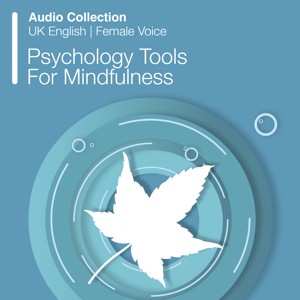




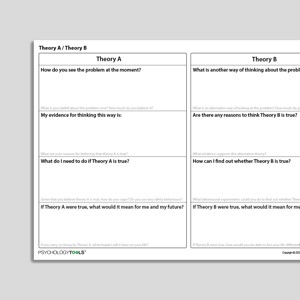

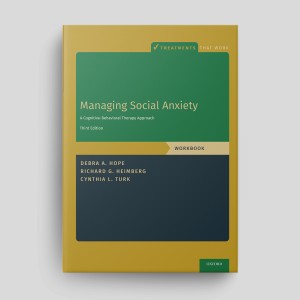
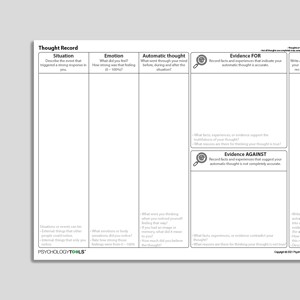
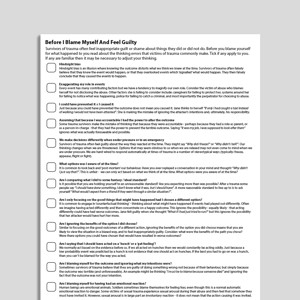















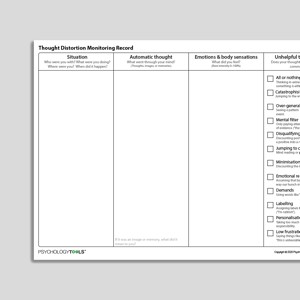

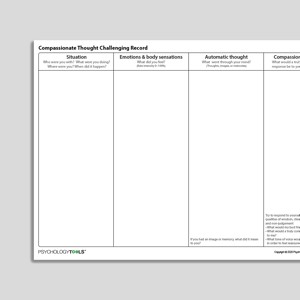
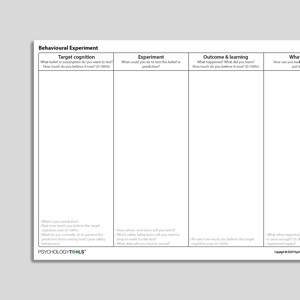

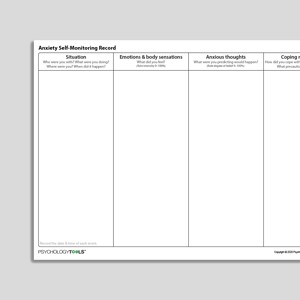













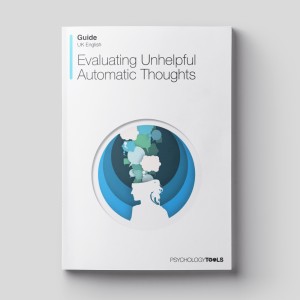







![[Free Guide] Understanding Post-Traumatic Stress Disorder (PTSD)](https://media-engine-production-public.s3.eu-west-2.amazonaws.com/29108/conversions/%2Afree_understanding-ptsd_en-gb_Guides_Cover-preview.jpg)




